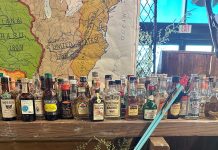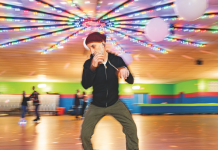
My becoming a figure skater is quintessential Minnesota. My dad was a goalie on a hockey team, and my mom grew up across the street from Loring Park. She spent winter nights on the pond, and ended up with two fake teeth to earn her recreational hockey stripes.
They also shared an interest in watching figure skating, so when Michelle Kwan and Tara Lipinski competed in the 1998 Olympics, it was a family event. We gathered around the TV to watch, but I never sat still. I pretended I was a medal contender, flailing my arms and jumping nonsensically in the air, tucking my knees and surely looking more like a frog than an ice princess.
That was the night I knew I wanted to figure skate. My amateur performances as a six-year old on the living room floor later became practiced routines on the ice in front of an audience. I even experienced the thrill of winning a few medals.
I got tremendous support from the figure skating community, but by high school, I was frustrated that I couldn’t get recognition for my sport as the hockey players did, so I decided to be a hockey cheerleader. Performing on the ice in between periods made me feel like I was a political advocate for figure skaters everywhere. The ice was my soapbox to wordlessly remind the crowd, “Remember: There’s more to skating than chasing after a puck.”
But, the two sports are apples and oranges. For me, figure skating is less about athleticism and more about the ability to express emotion through movement. It takes an educated eye to understand its aesthetic value, so it’s understandable why figure skating isn’t offered as a high school sport. Plus, in the State of Hockey, a high school figure skating competition probably wouldn’t draw a crowd.

As a young figure skater, it was still hard not to feel a rivalry with hockey players. They mimicked us during our practice sessions, and our skating school director had to fight hockey teams for ice time. It’s probably what led me to wear a shirt that said, “If figure skating was easy, they’d call it hockey.”
I haven’t worn this shirt in nearly ten years. It’s faded and a bit too small now, but also because the rivalry isn’t embedded quite as deep anymore, thanks to a special friend I met on the ice.
In college, I stopped skating to focus on school, but took a wintertime job as a warming house attendant at Sandcreek Park in Coon Rapids. It was an easy gig—sit in the warming house and take a couple laps on the ice every so often to make sure everyone is safe.
I didn’t expect to meet someone like seven-year-old Amelia. She came with her dad to the park nearly every weekend. One day when there weren’t many people at the park, I laced up my skates and practiced spins. Amelia watched me, and while I was still spinning, I heard her soft voice say, “Will you teach me?”
From then on, Amelia became my student, and friend, for the rest of winter. If I was in a bad mood, she’d drag me out on the ice, reminding me of skating’s healing abilities. When her dad said it was time to go, she’d say, “just one more,” and practice fifteen more spins.
In addition to meeting Amelia, I saw friends reunite at the park for pick-up games of hockey, lovebirds hold hands, children learn how to skate for the first time, and new friendships form among the neighborhood kids.
Minnesota winters can be dark and brutal, but in the State of Hockey, there’s a rink at seemingly every corner where the joy of skating disrupts the melancholy. No matter the sport that’s performed on the ice, I am so happy, and blessed, to live in a state with the best tradition around: skating.
Read more about figure skating and the 2016 U.S. Figure Skating Championships in St. Paul, from the perspective of Barb Yackel, a local figure skating coach.






